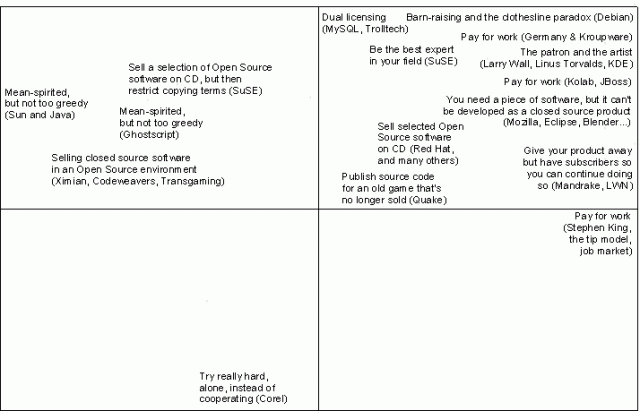Summary
SummaryPart Three of this book has presented a number of case studies of companies and organizations in the Open Source world. Challenging traditional IT businesses through the rules of openness has forced the players in this sector to reassess their ways of doing business, which in turn has given rise to new and successful innovations in business. In the case of Linux Weekly News, for instance, it wasn't so much a question of the Open Source ideology, but the natural openness of the Internet and how to react with that. On the other hand, Debian and the clothesline paradox can help us understand that it may be hard to find the right answer because we've yet to ask all the right questions. I've tried to judge each example according to how successful a company has been financially, together with how well the example follows the principles of the Open Source ideology. I thought it would be useful to sum up the results of this long section in a picture, which as we all know will say more than a thousand words.1
You'll find the financially successful examples from this section of the book towards the top of graphic, and the less successful ones towards the bottom. The examples that follow the principles of Open Source are on the right, and the mean-spirited ones are to the left. 
Chart of business models / Summary of Part 3
- 1Of course, this part of the book already has over 30,000 words - my computer can calculate that all on its own, isn't that marvellous - but I hope the graphic is of some use anyway.
- 26075 views